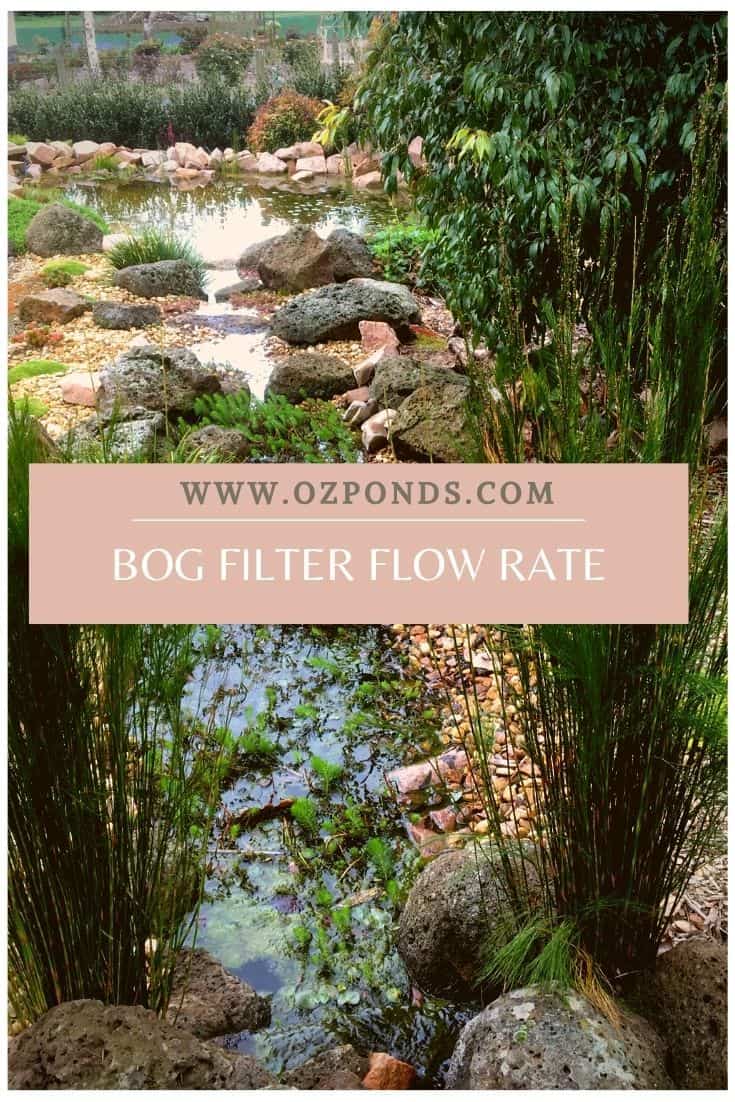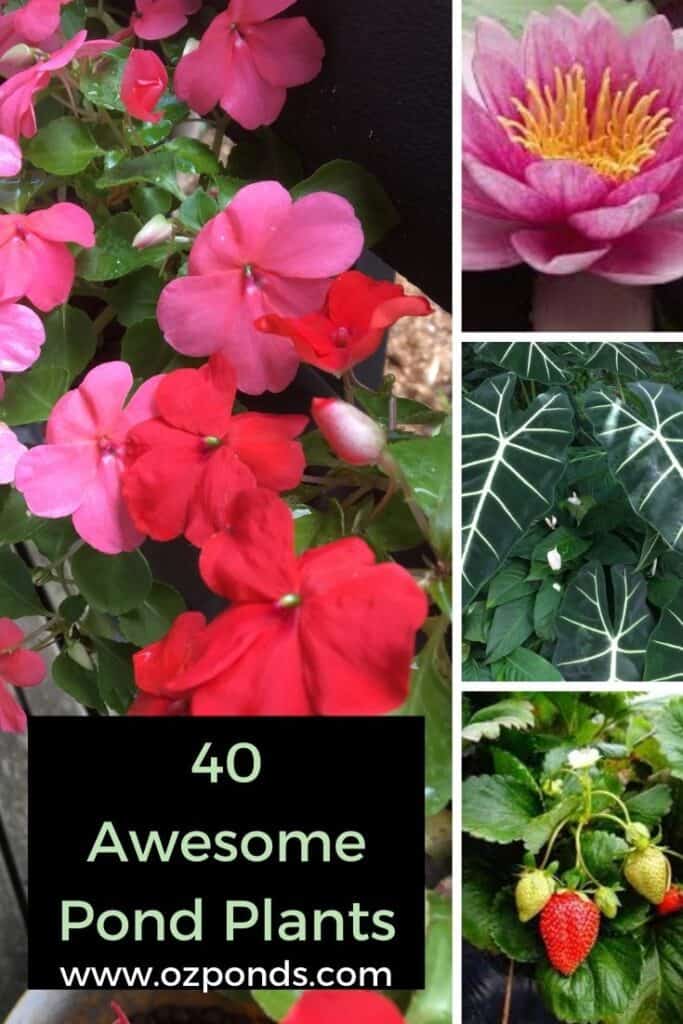Bog filters are incredibly efficient and low maintenance pond filters!
In my opinion they are superior to any other biological filter.
They are so effective because they are just scaled down versions of bogs and wetlands found in nature.
Bogs and wetlands are the natural water purifiers. There are a few major components to a successful bog or wetland. One being water flow.
In all bogs and wetlands the water passes through slowly. This gives the bacteria’s, enzymes, plants and micro organisms the time needed to purify the water.
If you aren’t sure how this process works I suggest you read my article on the nitrogen cycle in a pond or watch the short video below.
Flow rate for optimal results
For me I’ve found I get the best results if I allow 5-12 minutes for the water to pass through the bog filter.
Small ponds like my patio wine barrels or budget fish pond do well in the 5 minute range.
This seems to allow adequate time to cleanse the water while providing a flow rate slow enough that the solid waste gets trapped in the filter.
The 5 minute flow rate still allows the water to be turned over at least once every hour. This is more important on smaller ponds than larger ponds.
Larger ponds are more stable and tend not to be as overstocked as smaller ponds. I found I can allow 12 minutes for the water to pass through the bog with fantastic results.
This is simply what I have personally found most effective. On my budget ecosystem build I created an undersized bog filter to replace the expensive bio falls unit.
In this system the water passes through the bog in about 2 minutes. While it works and I have great water parameters I find slower flows more successful.
To regulate the flow I should have added a couple of valves. That way I could adjust the flow into the filter and discharge the excess into the stream or into circulation jets positioned throughout the pond.
I’ve tried to explain it in the video below.
Sizing the pump and regulating the flow
So as I just mentioned to set the desired flow you really need to use valves or do a heap of calculations to select the perfect pump.
You need to remember the optimal 5-12 minute range is when the bog filter is filled with the rocks, gravel and plants. Calculating the actual water volume in this situation is a nightmare.
That’s why I use time to pass through.
So the easiest way is to size the pump for the actual pond. For most backyard ponds it’s best to aim to circulate the water once every hour.
You will loose some flow due to head height and pipe friction. I have an article on all that if you want to go more in-depth.
Without going into all the math slightly oversize the pump.
So for a 5000 litre pond I would select a 6000-7000 litre pump.
Not all this water will be directed to the bog filter, some will be used on circulation jets, a waterfall or stream.
The flow into the bog filter is regulated by a valve, now you can dial it in so you get the exact flow rate.
I hope that makes sense. The video above used my patio aquaponic system to try and demonstrate the point. In it you can clearly see the valves.
Size of the bog filter
The size of a bog filter can be as little as 10% of the ponds volume or surface area, right up to 50%.
I like to create up flow bog filters. Those are more effective as the water is forced up through the rocks and gravel.
A bog filter designed in this way is easy to maintain and clean. A filter like this shouldn’t really need to be any bigger than 25% of the pond.
The rocks and pebbles will house the bacteria and it’s a good idea to incorporate different sizes.
Larger rocks down the bottom to pebbles on the top.
You’ll also want to incorporate an area for solids to accumulate and be removed. I have an article on sizing a bog filter where I go more in depth.
Plants in the bog filter
Plants are added to the bog filter to remove excess nitrogen predominantly nitrate. It’s actually the bacteria that provides most of the heavy lifting.
Adding a nice variety of plants makes the bog filter look natural. Just be careful not to add plants with aggressive root systems.
If the roots clog up the gravel the water won’t flow evenly through the filter. This will lead to anaerobic (dead zones), this will greatly reduce the efficiency of the bog filter.
I live in south-east Australia. Here we get frosts throughout winter. Adding tropical plants to the bog filter helps absorb loads of nutrients through the warmer months.
Then once the first frost comes these tropical die off. This prevents them taking over the bog and blocking the gravel.
I do also like to incorporate smaller perennial. Once a year I go in thin out what’s needed so it doesn’t get to overcrowded.
There are tons of plants you can select from I have an article 40 awesome pond plants, many of these are well suited to a bog or wetland filter.
Subscribe
Hopefully this article has been helpful.
If you want more DIY pond tips, ways to save money and maintain a beautiful pond, then subscribe to my mailing list.


